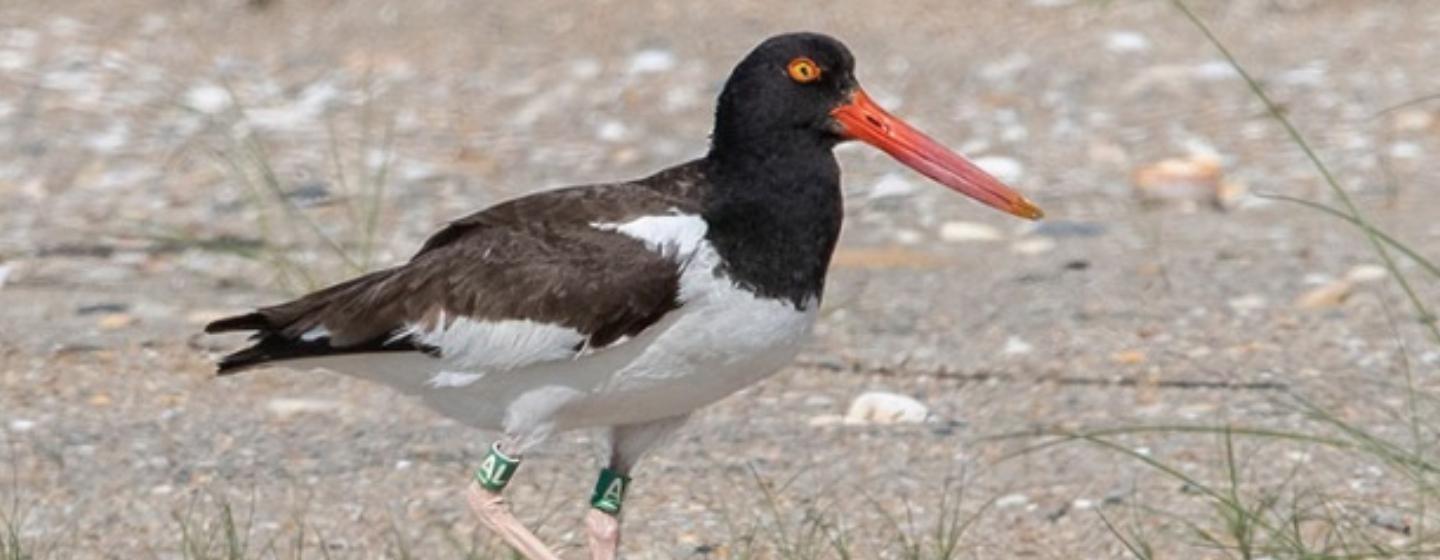"AL" the Shorebird Returns to Cape Lookout


Many folks visit North Carolina’s Outer Banks year after year for family vacations, reunions and other special events. But another species of visitor shows up every summer, too. That’s “AL,” as she’s known to National Park Service researchers at Cape Lookout National Seashore. AL is a female American oystercatcher with a distinct orange bill that’s now in her 19th year of spending part of the summer on the Outer Banks.
The Facebook page of the Cape Lookout National Seashore announced AL was spotted on the seashore in May 2025. AL was first banded in 2005 in Georgia in an area popular for wintering American oystercatchers. Her original red leg bands, added so that researchers and observers could track her travels, had the combination “R, 4.” She laid her first nest of eggs at Cape Lookout National Seashore in 2007.
National Park Service scientists say ever since then, she has wintered in Georgia and returned to Cape Lookout in the summer to nest and raise her young. In 2010, her bands were changed to the dark green “AL” that she wears today. (Yep, that’s where her name comes from.) In the 19 years that AL has been nesting at Cape Lookout, 29 nests have been documented to her (sometimes two a season). All told, she has raised 11 chicks to fledgling (the age when chicks fly away).
On Facebook, the Cape Lookout team wrote, “With her most recent sighting at Cape Lookout National Seashore, we now know that AL is at least 21 years old! For a species with an average lifespan of around 17 years, AL is truly what legends are made of!”
What makes AL’s appearance special, in addition to year-after-year consistency, is that it’s a hopeful sign of a healthy ecosystem. The park service calls American oystercatchers a “high priority shorebird species” that is threatened by coastal development. The birds nest on undeveloped beaches, and their presence indicates the seashore is in good shape.
Oystercatchers get their name because of their favorite foods: oysters and other shellfish. The birds use their long, knifelike bills to grab shellfish and hammer it against rocks or other hard surfaces to crack it open.
Cheers to AL! We wish her a happy and productive visit to the coast.
Wildlife biologists from Audubon North Carolina work to save the oystercatcher.